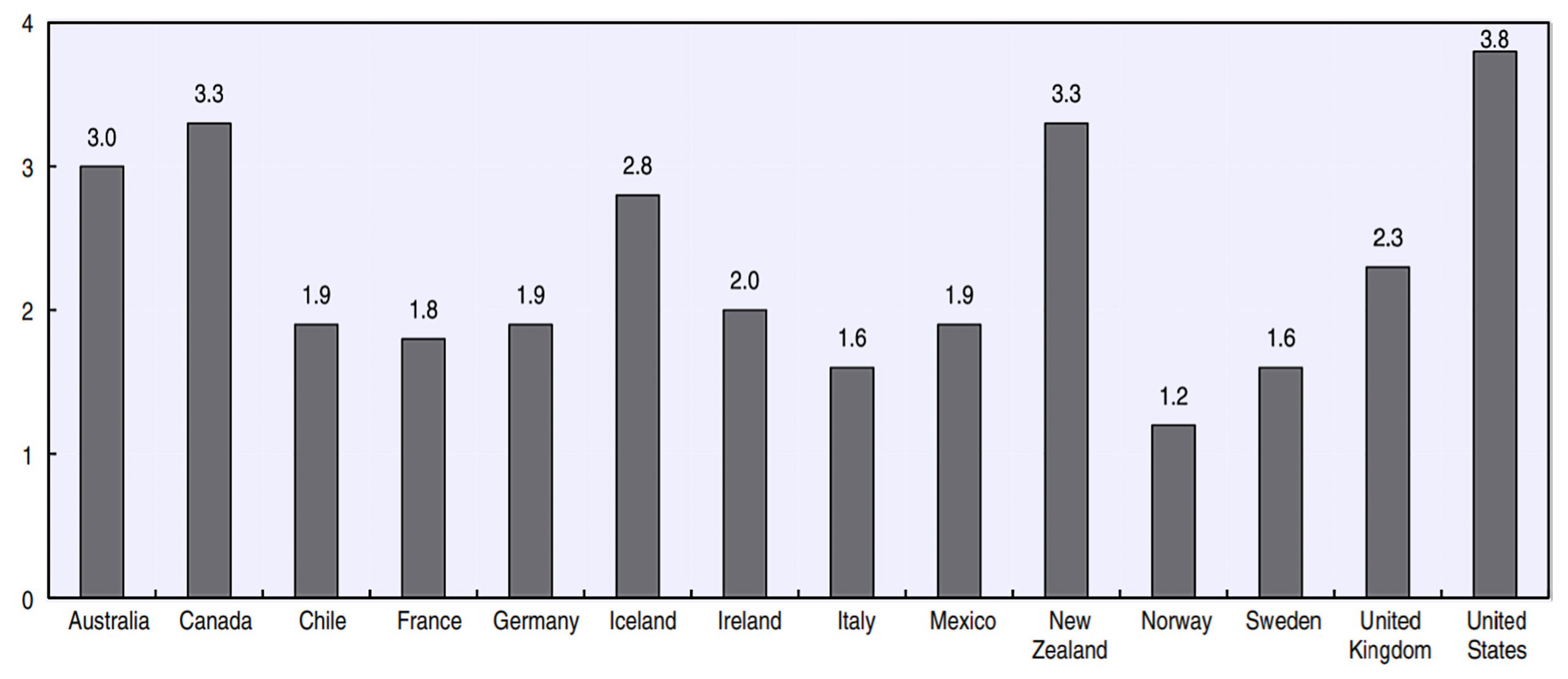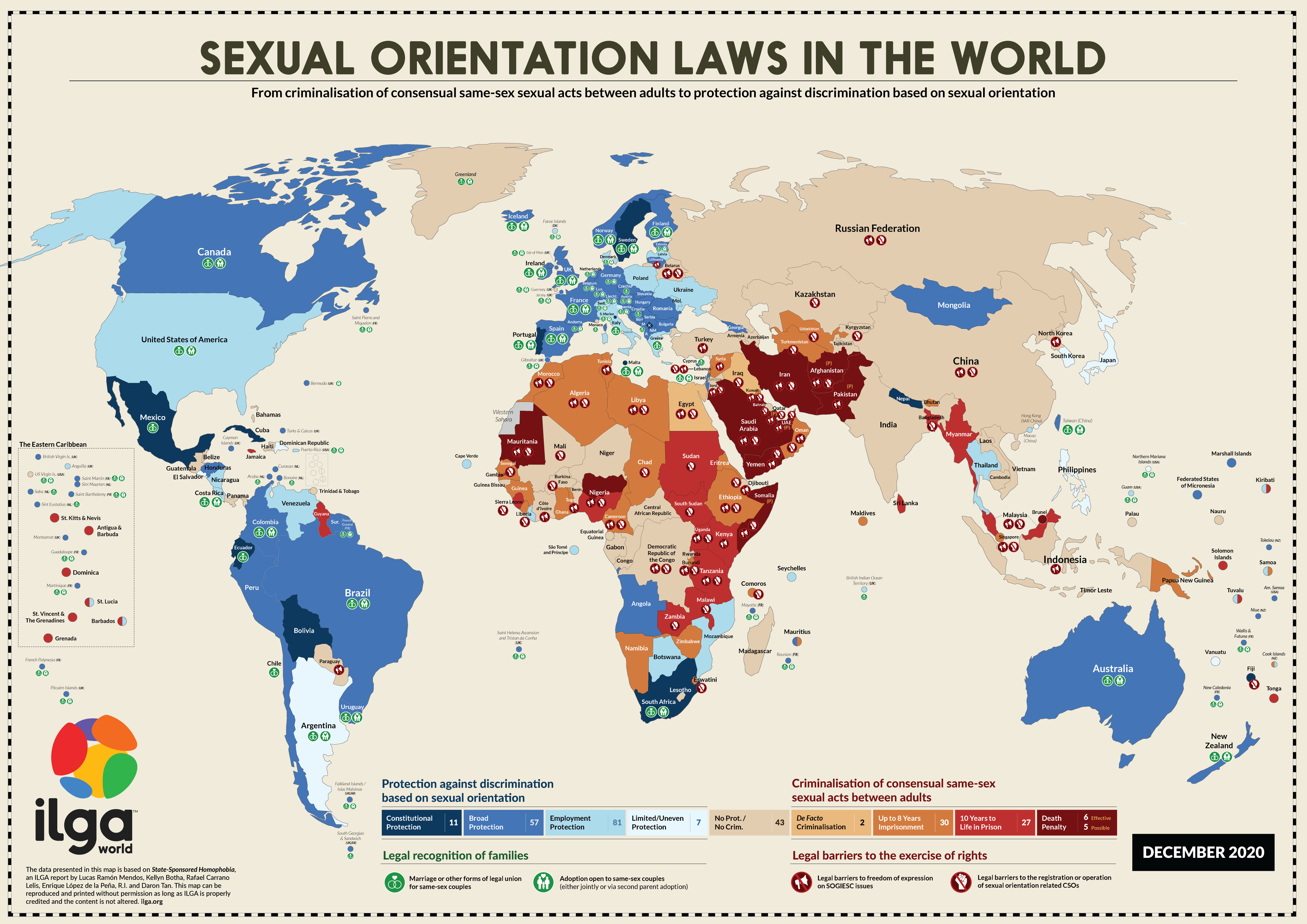

In our previous chapter we discussed the sex ratio. In Demography until recently, people have been identified only according to biological sex, and biological sex has been described only in binary terms – male or female. However, this understanding of sex is being challenged, and a rapidly growing number of identities are being recognized. It remains to be seen how these identities will be represented in demographic reporting and analysis. It will be the work of our generation to discover the consequences of gender diversity for fertility, mortality, migration, population change, and the economy.
The terminology to describe the various identities may change over time and could be different in different communities and countries. In North America in 2022, the term LGBTQ2S+ was widely used to refer to lesbian, gay, bisexual, transgender, queer, two-spirit, and other identities.
Identifications generally fall into four categories of identifiers that can both be stand alone and intersect with each other (Downie (2019)).


There is generally a lack of data concerning LGBTQ2S+ people due to the relatively recent recognition of some identities, the illegal status of LGBTQ2S+ people in some countries, and the challenges of collecting this very personal information. The transgender, intersex, and non-binary communities are especially underrepresented in the data.
The map below show the legal status of LGBTQ2S+ persons across the world, ranging from constitutional protection (dark blue) to death penalties (dark red).

Credits to ILGA World (2019). Map of Sexual Orientation Laws in the World. The International Lesbian, Gay, Bisexual, Trans and Intersex Association.

According an OECD report based on survey data in fourteen mostly western countries, the lesbian, gay, and bisexual community comprised 2.7% of the surveyed population on average. This is shown in Figure 4-1 below. Keep in mind that data collection methods in the different countries may vary with respect to survey participation, methods of administering the survey, the degree of anonymity, and other factors (OECD 2019).


Canada and the United States currently provide the most elaborate set of available statistics to date. They have the largest LGBTQ2S+ populations by estimated and recorded numbers.
Statistics Canada (June 2021) estimated that, based on several different surveys, there were over one million people in Canada who identify with the LGBTQ2S+ community, about 4% of the Canadian population.
In the USA, 2021 polling by Gallup found that the LGBTQ2S+ population is 5.6% of the US population, which amounts to 18.65 million people.[1]
Transgender, intersex, non-binary and gender-expansive people
Goodman et. al. (2019), looking at 17 countries over fifty years, estimate that between 0.1% to 2% of each country’s population may be trans +. In 2011 it was reported by the Williamson Institute that the trans, intersex and non-binary+ community constituted 0.3% of the US population (See Gates (2011)). This doubled in 2021 to account for 0.6%. Statistics for Europe are difficult to compare as each country chooses its own data collection policy. The UK claimed a trans + population between 200-800 thousand people in 2018.[2].
Canada is the only country that by 2021 had implemented several new categories of gender and sexual identity into its Census. The 2021 census found that 59,460 Canadians aged 15 or older self-identified as transgender, and 41,355 identified as non-binary, accounting for 0.33% of the population in this age group.[3]. They were principally urban: more than ninety percent lived in a city with over 100,000 people. Nova Scotia, British Columbia, and the Yukon had proportionately higher numbers of transgender and non-binary people.
The same census noted that transgender people on average had lower incomes than the average Canadian. More than twenty percent of non-binary people lived in poverty, compared to about eight percent of Canadians.[4]

How will the increasing recognition of diverse forms of sex and identity affect the collection and analysis of demographic data? And what changes from sex and gender diversity can we expect for fertility, mortality, and migration, the three drivers of population change?
Data sets that include detailed sex and identity information instead of the binary M (male) or female (F) designations offer more information for researchers to study, and may result in greater insights into human behaviour and health; however, statistics generated will not be perfectly comparable to those generated from earlier surveys.

Unless individuals are tracked by a national identity register, a nation’s census may report a decline in the number of men that is not related to death or migration but to the fact that there are more men transitioning to women than vice versa. If individuals do not report that they have transitioned, their data may confuse studies which track health and other outcomes related to biological sex.
Gender non-conforming people have faced hostility from parents, messages of shame from religious teachings and society more generally, discrimination in the workplace and in healthcare, and violent attacks motivated by hate. Common sense suggests their mortality rates, including suicide rates, have been higher than average. Increased acceptance of gender diversity will bring these mortality rates down. At the same time, some activities – such as hormone replacement and gender affirming surgeries, and some lifestyles – such as having multiple partners – may add risk.
Gender non-conforming people have faced difficulty finding partners with whom they can live openly, and have been barred from adopting children. With increasing freedom to form partnerships and adopt children, and with modern reproductive technologies and surrogacy arrangements available, the fertility rate could rise. Again, some activities – such as hormone replacement and surgeries – may reduce the fertility rate.
People of diverse orientations have traditionally migrated to larger cities. In larger cities there is more tolerance of diversity, a greater chance of finding someone similar to oneself, and a greater variety of occupations available. One reason cities are economically more productive than other regions is the creativity of gender-diverse and other non-conforming people. This is particularly observable in the Arts, Design, Entertainment, and Fashion sectors.
Migration of gender diverse people across provinces, states, and nations will occur in response to differing national policies and prevailing attitudes relating to LGBTQ2S+ rights, which affect economic opportunities for LGBTQ2S+ people.



